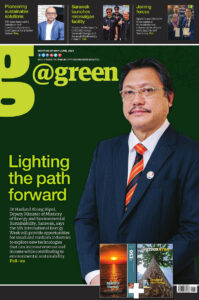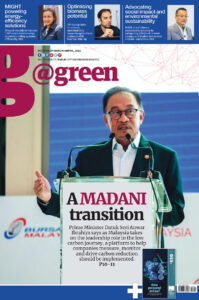Sector Committee for Bamboo Oxygen Park (BOP), MAPAN (Malaysian Association of Public Advocacy for Nature)
When planted along riverbanks and creeks, bamboo can sequester carbon in its biomass
Potential of bamboo in mitigating soil erosion
Natural bamboo stands were abundant for their many uses, including soil erosion mitigation. However, fast human population growth, expanding agriculture, and rapid urbanisation, especially in major cities and municipalities, made creeks and rivers vulnerable and eroded during flooding.
Species of bamboo and woody plants can be planted along rivers and creeks to rectify soil conditions due to the entangling of the root systems. Bamboo has shallow roots that can be ramified and lengthened in the presence of water and act as living cement to hold the soil for growing plants.
The holding capacity of the soil is more substantial when bamboo is interplanted with selected dicots of small shrubs and trees. A study by Merdelyn, C.L (2019) in the Philippines from 1999 to 2019 reported that the bamboo planted along creeks was sturdy even after the super typhoon.
Bamboo had protected the creek from eroding due to the root matting underneath, enriched by a web of roots, soil, sediments and weeds.
Bamboo Flash Flood Rescue (BFFR) System
The system involves the planting of a combination of bamboo, dicots, and shrubs to stabilise the riverbanks and creeks for rehabilitation, as well as for monitoring and determining soil conditions, flood warnings and carbon stocks of bamboo along riverbanks and creeks incorporated with sensor system of flood, soil and carbon sequestration monitoring devices.
BFFR setup depends on the soil type, pH and terrain elevation suitability. Bamboo is most suitable to be planted in sandy clay, loamy clay, and well-drained soil with a pH of 4.5-6.5. Bamboo is also suited to be planted at 100-800 metres above sea level with a slope of not more than 250.
Climate action to address global warming through bamboo planting
Bamboo plants absorb CO2 during growth, where carbon is locked as biomass in the photosynthesis process. Therefore, other than mitigating soil erosion, bamboo planted along riverbanks and creeks can sequester carbon in its biomass.
Bamboo has a short planting rotation of four years and grows at a rate of 1.2 cm per day, making it sustainable to mitigate GHG emissions and a potential carbon sink. The number of stomata on bamboo leaves is relatively dense and numerous, with more than 500 stomata per mm2.
Thus, bamboo can be used as an effective plant to reduce carbon emissions in the atmosphere. Through photosynthesis, bamboo carbon stock plays an essential role in the carbon
cycle to reduce CO2 in the atmosphere and, simultaneously, increase oxygen levels.
Given that bamboo plays a vital role in quickly absorbing carbon from the air, it is necessary to research how much bamboo plants can store carbon stocks and reduce climate change risk.
Carbon stock in BFFR can be done by measuring the aboveground biomass. Measurement of plant biomass can be done with destructive and non-destructive methods. For a wider area, stand-level biomass estimation of bamboo plantations can be done by remote sensing by applying Landsat Thematic mapper.
Bamboo products as a carbon sink to mitigate global warming
Essentially, CO2 production to the atmosphere is avoided by carbon storing in bamboo products, denoted as A, versus the CO2 emissions, designated as B, which will determine if the selected bamboo product is a viable storage option.
Therefore, if A > B, then viable carbon storage is achieved (Valters, K., et al., 2017). On the same note, the amount of energy used in the production of bioproducts are either renewable or fossil energy for 1 m3 production, where ECO-it software is used to determine the amount of CO2 generated.
The amount of possibly-avoided CO2 in the products can be calculated by the carbon content in the products in terms of their mass. Then, the actual CO2 amount avoided in 1 m3 of products is compared with the emitted CO2 amount to produce 1 m3 to choose a viable bamboo product.








